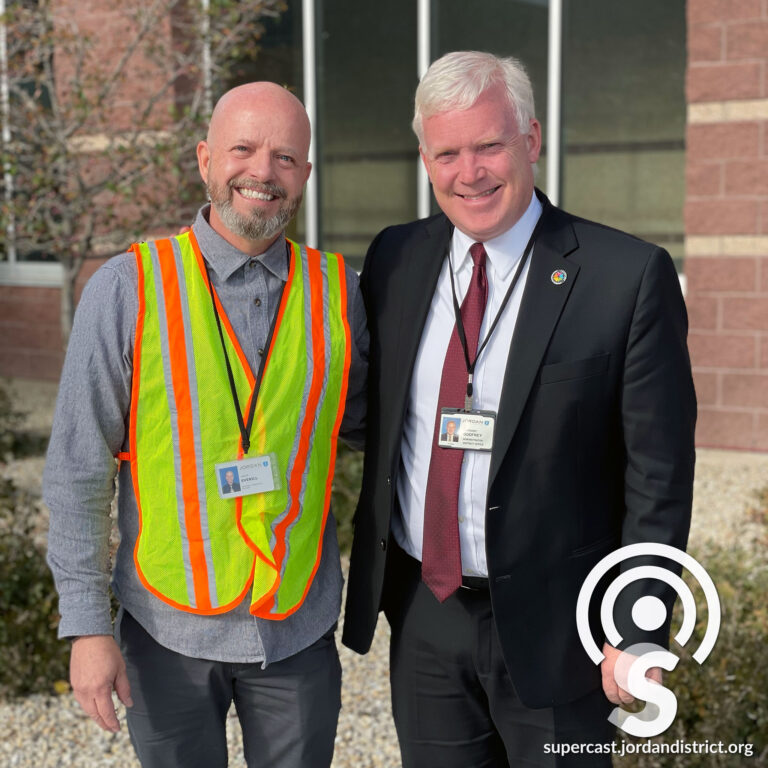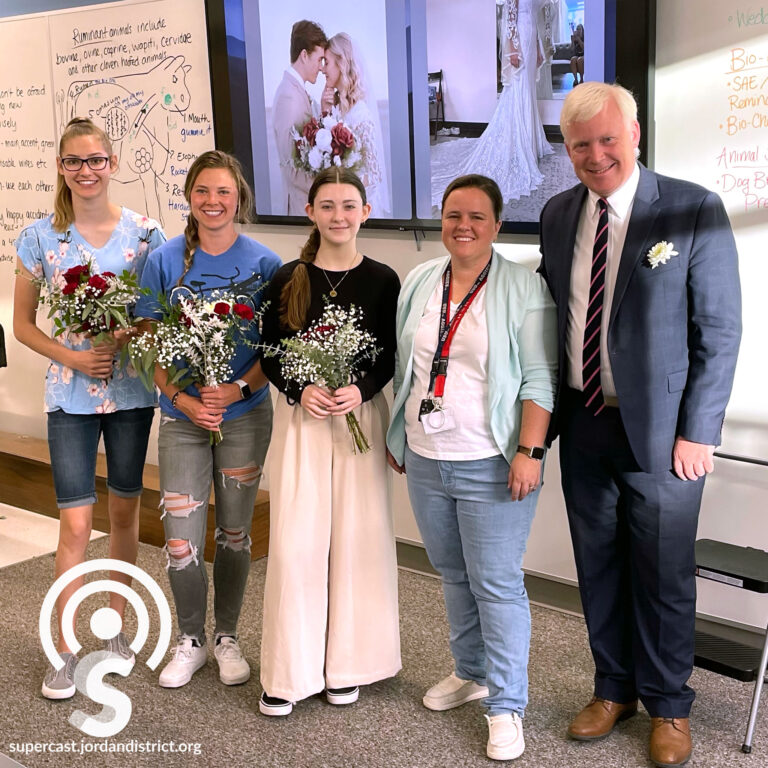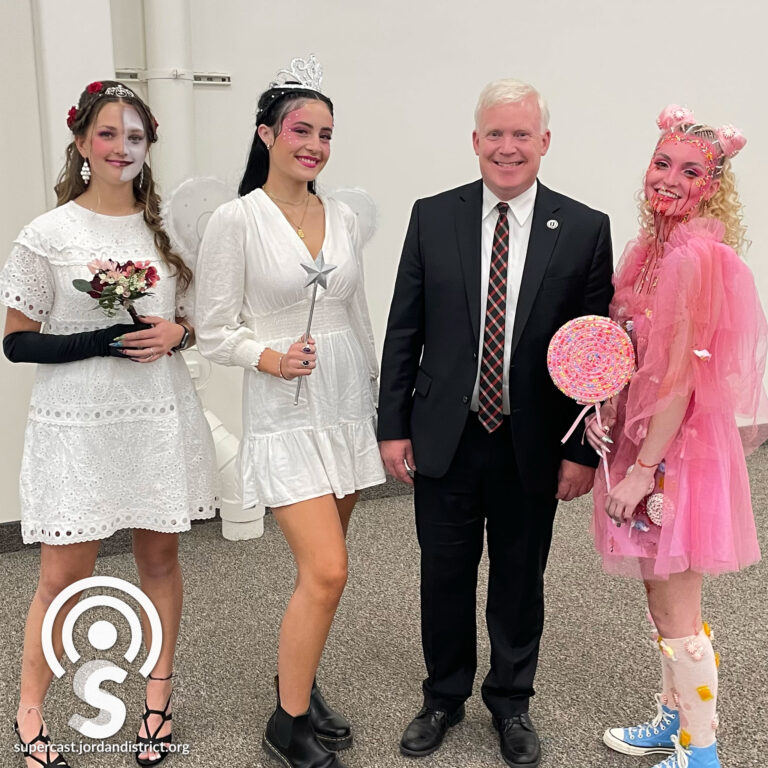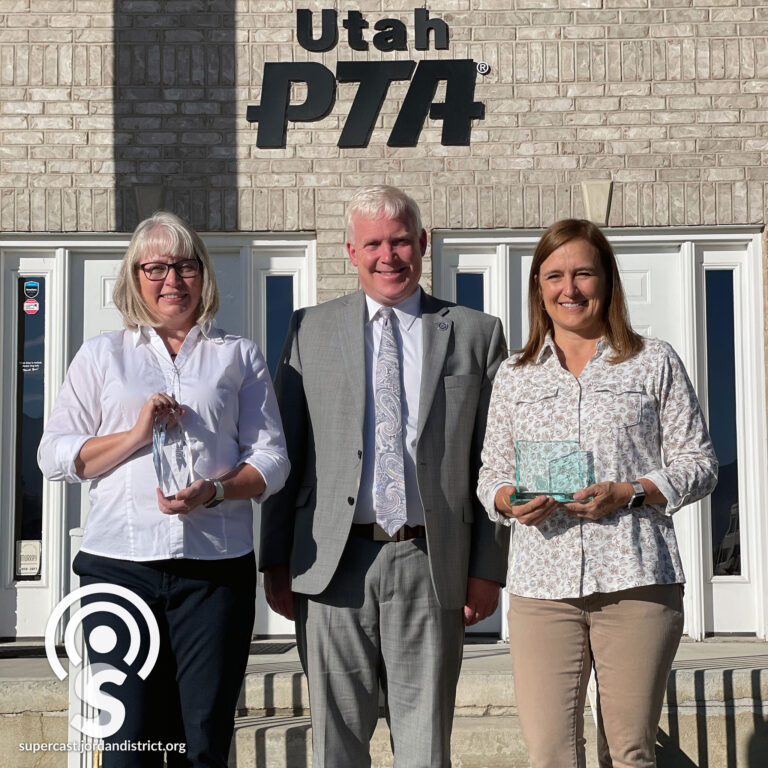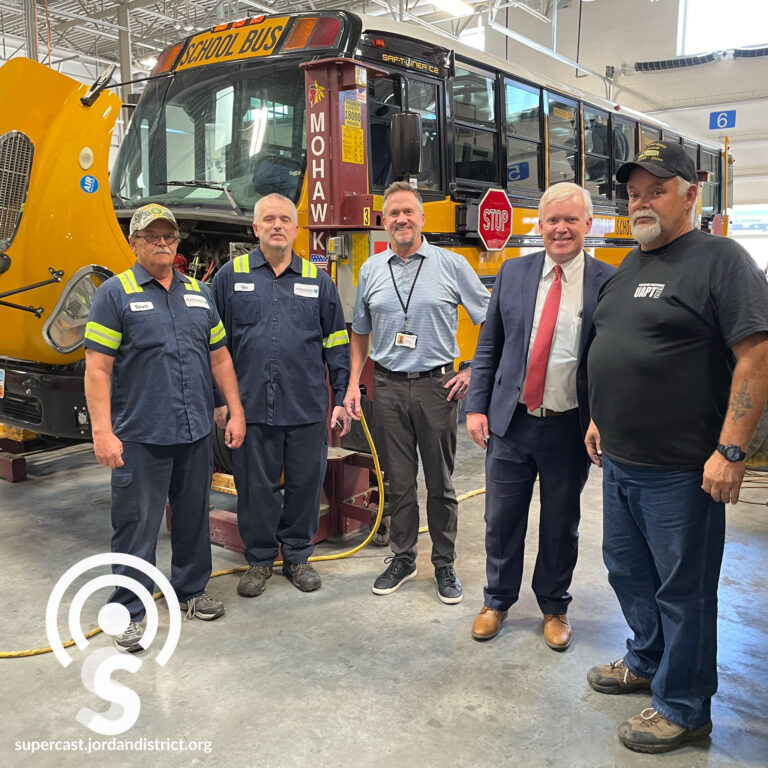It is a process schools are required to use when they need to conduct a controlled and safe release of students to parents or guardians following an emergency, or other significant disruption to the normal school schedule.
On this episode of the Supercast, we dive into the most important details of Reunification. We’ll explain why understanding how Reunification works can help us get students back home to loved ones in an emergency situation.
Audio Transcription
Anthony Godfrey:
Hello, and welcome to the Supercast. I'm your host, Superintendent Anthony Godfrey. It is a process schools are required to use when they need to conduct a controlled and safe release of students to parents or guardians following an emergency or other significant disruption to the normal school schedule. On this episode of the Supercast, we dive into the most important details of Reunification. We'll explain why understanding how Reunification works can help us get students safely back home to loved ones in an emergency situation. We're talking today with Lance Everill, our Emergency Operations Manager. Lance, thanks for taking time again to be on the Supercast.
Lance Everill:
Good morning. It's my pleasure to be here.
Anthony Godfrey:
Lance does a ton of great work to keep us all safe, and students in particular, here in Jordan School District as you've heard on previous podcast episodes. If you've been listening in. We wanted to talk with him today about the Reunification process. What it is, when we might use that process, and what it will look like, first of all, from a parent's perspective. I want to remind everyone, this is just one aspect of what we do to keep kids safe and to keep our employees safe. So many different things can possibly happen when we have as many students and employees and buildings as we do, and so we have to be prepared for anything. So it's rare that we need to use this procedure, but we really want to be sure that we have it in place, and that we've trained well, and that we're prepared if we do need it. So, Lance, would you mind starting out just telling us about what Reunification is and when we might need it?
Lance Everill:
So a Reunification would be a time when we have to release students either earlier than a normal release time or later than a normal release time. And this would be because there's some type of an emergency or disruption to the normal school day schedule that would cause us to have to do that. Now, that's obviously not what we want to do is to release students at a time different than normal. And the reason is, is because at that normal release time, the whole rest of the world outside of the school district and the school, lines up to meet and greet, and receive, and pick up, and babysitters, and family members, and neighbors, and whomever might have that charge to take care of those kids. So ideally, we always release that normal end of the school day, but we do have the ability to then release early or later if it's warranted.
Anthony Godfrey:
We only need Reunification after something has happened at the school that requires us, as you said, to either keep kids in place beyond the end of the school day or to release them early. And there can be any number of reasons for that. But there's been communication to parents before Reunification happens about what's happening at the school.
Lance Everill:
Yes. Yeah, so we have multiple means to do that. The most common way that the District communicates with parents is through the Skylert Messaging System. So all parents and guardians should have an opportunity beforehand to identify the best means that they can receive those Skylert messages related to all kinds of school business. And in this circumstance, obviously related to a school specific emergency where we needed the parents to be aware and then if we needed to enact a Reunification.
Anthony Godfrey:
So let's go through a scenario. Let's say that there is construction going on around the school and workers hit a gas line, and we start to smell that in the school. So we know that we can't continue the school day. Talk me through what may happen as a result of that.
Lance Everill:
So the first response would be to do a shelter in place, which is a response to the chemical spill outside, if you will. So we would try to stay in the building as long as we could, as long as it's safe. So the first reaction the school would have would be to shut down the air handlers to prevent the outside air from coming in. So we're not bringing in noxious air into our students and staff in the occupied spaces. If for some reason it got so bad that law enforcement and the fire department determine as a public safety issue, we can't stay at the school property. Now, keep in mind, we always want to stay at the school property if and when it's safe to do so, because it's all of our tools, our controls, our food, our water, restrooms, everything that we need to sustain, plus our background checked people. But in the interest of immediate life safety, if it's determined that we have to exit the property altogether, all schools have identified a secondary evacuation location that's just for immediate life safety. Let's get to a church house, or a local business just down the street, or the school next door, where we have an understanding that we can relocate in the interim.
Anthony Godfrey:
And many times we are able to dispatch buses very quickly and get kids loaded onto buses. We have people in the office that can drive. We do have some spare buses. So in case of an emergency, I've also seen us scramble and just get kids on buses quickly.
Lance Everill:
Yes. And that is a great option because the last thing we wanna do is have our kids stuck in a parking lot somewhere or a park just down the street for an extended period of time. Naturally, there's going to be needs that everyone has with using restrooms, food and water. Also, the nice thing about what you're saying is if we can transport kids from that secondary evacuation location to another one of the Jordan School District facilities, let's say a middle school or a high school down the street that has a large auditorium or a large gymnasium, cafeteria that they can help us house the student body in. Then we all of a sudden have gotten our kids back within a Jordan School District facility again, with our controls, our food, our water, our people, our background checked people, and then that way we're not also imposing on a local business.
Anthony Godfrey:
I can think of some specific examples where we've pulled kids to say the auditorium at a high school, and what do we do? We continue instruction. We've actually been able to hold onto kids, we get the problem solved, and we bring them back to the school. But for purposes of this discussion, let's say that we aren't able to return kids to school. We determine that we need to end the day and we can't continue instruction. And let's just, for the sake of argument, assume that they're still at the school, but we, and, and they're safe for the time being, but we know that we need to reunify them with parents and guardians for the remainder of the day. So talk me through what that looks like as a parent. They've probably already received a notice that we've been alerted of a gas leak. We're working on that. Once we determine that Reunification is necessary, then what does it look like from a parent's perspective?
Lance Everill:
So I think the parents, one of the first things we'll do is just to reassure them that everybody's safe and that the emergency or the disruption has been handled, like you're saying. But now we've determined that we have to reunify them either earlier or later than the normal release time. So part of that process is, is we can notify parents in advance. The District has produced about a six to seven minute long video that's housed on the Auxiliary Services website, under the Incident Command page that's strictly for parents and guardians to view. And it gives them some information in advance of an emergency of what they could expect in this type of a circumstance. So it talks about staying home, staying informed, and being ready. When we talk about being ready, that means knowing that I will be called to come to the school or the Reunification location to pick up the child accordingly. So when they are notified that they can come to the school or wherever that Reunification center is, that they will come as directed by the school, bring their ID, and then we have a process that we help cycle them through so they can get their kid and take their kid home for the day.
Anthony Godfrey:
Talk us through what that looks like on our end, on the school's end. What are the things we're doing to be sure that students go home with their family?
Lance Everill:
So one of the most important things about schools directing parents and guardians to watch this Reunification video in advance, is because it talks about how important it is for us to try and be as orderly as we can when coming to pick up kids. Because you have to imagine that whatever the disruption was or the potential emergency that occurred during the day, there's probably a heightened sense of emotion in all those parents and guardians as well. And they're eager to get home or eager to get to the school to pick up their child. So an important thing for them to understand is that this is a meticulous process. There's nothing more important for the school and the school district than student life safety and student accountability.
A good thing that parents and guardians can do in advance of this, is to make sure that in their student Skyward records, that they've identified multiple people that they authorize to be able to check out their child in case of an emergency or other type of need. That really helps because if we're released, if we have to reunify students before the end of the school day, a lot of parents might be at work. They might be stuck in meetings. They could even be in the next county related to their business. So that becomes extremely hard for them to then break away from that and make it all the way out to the school then to go through the Reunification process. Additionally, because of that heightened sense of excitement, they might be, ‘I can't wait half an hour. I can't wait 45 minutes. I need to know that my child is safe now.’ So it's really helpful when they keep those checkout rights in the student skyward records updated and with as many people as that they are comfortable listing.
So when the parents then come, they will be greeted at the school, and told where they can line up and what to prepare for. We have a student Reunification Checkout Card that we provide to every parent or guardian that they fill out who their student is. Then when they check in at the school, they have an opportunity to then show their ID so the school can verify who the person is and then verify within the Skyward that they have the right to pick up the child. Once we've verified that, then the parents are directed to a spot to wait for the kid, the Reunification center or the Reunification area. Then a runner takes this verified student checkout card to the applicable teacher area where the kid is, notifies the teacher that they're picking up this particular student, and then they go to the Reunification area to reunify the student with the parent or guardian. At that point, what's really important is that we take that student checkout card and we mark on there, indicating that the student was reunified with that parent or guardian. That becomes our accountability process because we have records of the student coming to school. We took accountability and attendance related to the emergency, and then we are doing this final accounting once the student is checked out and reunified with that parent or guardian.
Anthony Godfrey:
And when do they fill out this form?
Lance Everill:
There's a couple of different ways they can do that. Part of our Reunification video online advises them that if they want, they can fill out the bulk of it in advance and they can do it online. We have these forms available online for parents and guardians, both in English and Spanish. We do have a form fillable document on there. They could fill out the basics of the information in advance, and they could even keep it in an appropriate place. Their glove box, their wallet, their purse, or something like that. And then related to if we do have an emergency, they just have to update it with the current date and the current time, and maybe just a little basic information. Otherwise, the school can provide these checkout cards when the parents arrive and they're greeted by the greeters. They'll be handed a checkout card that they can fill out, and then our checkers can then verify the ID and check out rights within Student Skyward.
Anthony Godfrey:
We'll provide a link to the video so that parents can watch that, and a link to the form as well in our show notes. As you pointed out, Lance, it's a time of heightened emotion, but this can take some time. And it can take some time because it's so vital that we make sure students are connected with their family appropriately. I think it's worth the time investment to be sure we do that the right way.
Lance Everill:
Right, and I know that parents and guardians expect that of us. They expect us to have constant accountability of their kids while they're in our care. And then once we turn them over, they would expect that we would keep meticulous records. What we can't afford is to have somebody bypass the checkout process. Whether that's the parent or guardian, they bypass our process, or the student bypasses and sees them, you know, in the parking lot and then runs away. And then we're like, ‘Well, where's little Johnny or Jane’ or whomever? So it's really important and we want them to support us that there's nothing more important to us than the safety and accountability of their child.
Anthony Godfrey:
Stay with us when we come back more on what you need to know about Reunification in a crisis.
Break:
Hello, I'm Sandy Riesgraf, Director of Communications for Jordan School District, and we want to invite you to connect with us. So many exciting things are happening in your child's school, your neighbor's school, in every school here, every day. Don't miss out on following the fun or simply staying informed when there's important information we need to share. Join us at jordandistrict.org, or follow us on Facebook, Twitter, and Instagram @jordandistrict. We can't wait to connect.
Anthony Godfrey:
So tell me, on the school end of things, what does it look like? What are some of the roles that we have in place? You talked about a runner, you talked about a checker that can check IDs. What are some of the roles that are in place in case of Reunification?
Lance Everill:
So as part of our incident command process, we have roles identified at the school in advance to deal with all those various emergencies that could occur during a school day. Such as the Incident Commander, Documentation, Safety person, and so forth. Once the emergency has been handled and that we feel like that the scene is safe and everybody's accounted for and we're ready to enact a Reunification, the school can prop up some additional roles that are specific to Reunification. Such as greeters that welcome the parents when they get there. Checkers that check the parent's or guardian's ID, and verify that against the student's Skyward records. We have runners that then go to retrieve the student once the checkout rights have been verified.
We also have a special circumstance person that might be identified that we can pull parents off to the side that maybe have unique circumstances like English as a second language, or they don't have their ID. There might be some type of other medical issue that's occurring. So we want people to be able to attend those parents and guardians specifically to try and meet their needs in an expedited process as well.
We also might have an activity coordinator identified at the school to try and engage the students productively in some type of activity if they're not able to stay in their classrooms in the building. This helps minimize stress because we're keeping people engaged in activities. We want to keep the activity at that moment while we're waiting to reunify. We want to keep things as normal as we possibly can to bring everybody's stress level down to engage students so they don't worry unnecessarily. And then we also need to potentially have crisis counselors from the District queued up and ready to go just in case there's any type of traumatic things that we need to attend to with students and staff.
Anthony Godfrey:
Thank you for putting together such a thorough plan. And as you go through the roles, I'm reminded that every time there's an emergency, we are in great contact with fire and police. You work really hard at those relationships and we continue to be complimented on the work you've done to establish a close connection with all of our emergency services in all the municipalities that serve Jordan District. So thank you for making that such an essential part of, of what we do as a district, connecting with those emergency services is essential to effectively keeping everyone safe.
Lance Everill:
Yes. Just so everybody understands, we have a team of about 23-24 people just on the District Fire, Safety and Security side of this conversation. All these people. We have somebody on duty 24-7, 365. And so we are there to support schools and these types of efforts. And that's just talking about just on the district level, and we can get a lot more district employees engaged if we need to. But what you're talking about with that involvement with police and fire, we work really hard in our huge team at the Auxiliary Services in the district office to engage with them and plan appropriately. But the amount of work that the schools are doing with their School Resource Officer, and their DARE officer, and their local fire agency is tremendous. And a big part of what they do is invite them out to their drills so they have an understanding of what they're doing and also get some of their input on things like, ‘Hey, how can we improve things? And what can we do better from your professional perspective?’
Anthony Godfrey:
Lance, I appreciate that explanation of our relationship with emergency services. I think that's, like I said, it's really important to our success and you work very hard at that. And I know that they were involved in modifying this Reunification plan to meet the needs of Jordan because we need them to be on board with the plan as well. So they were part of developing it from a best practice national model used throughout the country. So this has some really good backing this, this Reunification plan. It isn't just one person sitting in an office putting this together.
Hopefully we need to use it very rarely, but I just appreciate your continual focus on student safety. Parents out there who may be wondering, ‘Hey, what happens if this happens or that happens?’ You are always thinking about that. I really appreciate that you've had such a laser focus on all of the what ifs and we go about our daily business. We make sure that we're well trained, but you are always thinking about what could happen and what we need to be doing to be as prepared as possible.
Just to summarize, I appreciate your advice here to parents and that is to watch the video, be aware of that form, and if something does happen in that unlikely situation, just be ready to hear from the school about when to come and pick your child up. In most cases, we are able to continue the school day. We're able to keep kids safe. We keep parents informed, but mostly we can keep kids at school. But in the rare case, when we need parents to come, making it clear to them where to come and when to be there, I think can give a lot of comfort just for parents to know that we have that in place.
Lance Everill:
That's one of the biggest things we're really trying to accomplish. We're trying to inform everyone. And when we talk about responding to an emergency or enacting a Reunification from a school, it's not just about the students and the staff, it's obviously about the parents, guardians, and community members as well. So when we're all well informed, we've had an opportunity in a non chaotic moment to learn and understand the why. Why are we doing this? Now that we all buy into the why, how do we do it? When we all understand why and how we are going to make this happen, it's going to work in a much more efficient way while maintaining a safe environment, student safety and proper accountability.
Anthony Godfrey:
Like you said, we just have to stay focused on the purpose. The purpose is to keep kids safe and when necessary, reunify them with their family during the school day or after the school day. It's student safety and it's the peace of mind of parents that are at the forefront. Well, thank you again to you and your team, a large team, which if this happens, is gonna be on site, helping make sure that things go smoothly. You guys are always quick to respond and to be there for small incidents, for large incidents. And I really appreciate your responsiveness.
Lance Everill:
Well, thank you so much. And like I said, it's been a team effort. And we really rely on our professional emergency management and first responder community to give us best practice direction.
Anthony Godfrey:
As I like to say, we all have different roles, but the same goals, and that goal is student safety.
Thanks for joining us on another episode of the Supercast. Remember, education is the most important thing you'll do today. We'll see you out there.

